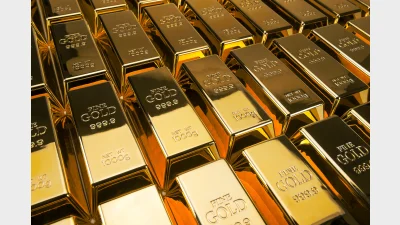Manager predicts gold could soar to US$3k in 2025



Global X believes the yellow metal could soar as high as US$3,000 this year, with market flows leading the charge.
Global X’s physical gold exchange-traded funds (ETF), GOLD and GXLD, recorded their strongest start to the year with $42.5 million in inflows in January, the ETF provider said on Tuesday.
The last time Australians piled into gold at the beginning of the year like this was in 2021, when they bought $31.5 million in gold ETFs at the start of the year as a hedge to market volatility, increasing fears of inflation and monetary policy concerns.
According to investment analyst Justin Lin, gold could surpass US$3,000 as ETF demand continues to rally, particularly as Donald Trump’s tariff agenda unsettles markets.
With physical gold ETFs already ranking as some of the top-performing funds last year, Lin expects further gains as global uncertainty pushes investors into the “safe haven asset”.
“After selling down the metal in November and December, investors worldwide, including in Australia, returned to being net buyers of gold this January, driving it to new all-time highs of US$2,815,” Lin said.
“Notably, gold recently hit its all-time high on moderate volume, suggesting the rally was driven more by broad market flows rather than speculative buying pressure. Overall, gold appears to be establishing a higher floor for the next leg of its uptrend.”
While consensus estimates place the yellow metal at around US$2,700 at the end of this year, the investment analyst said the momentum of the current environment lends itself to gold surging even higher.
Namely, he said a decisive break of around US$2,800 in the next few months would fortify the bullish trend, potentially setting up for gold to exceed US$3,000 as soon as the third quarter of this year.
“Global investors are positioning for ongoing share market volatility because of huge uncertainty on how Trump’s tariffs will affect the global economy. But notably, US investors sold gold in January,” Lin said.
“Ironically, US investors don’t appear to be that phased by Trump’s trade policies, being a significant net seller of gold over the past month. However, those in the firing line of Trump’s tariffs are becoming more risk conscious.”
On the other side of the coin, Canada and Mexico were net buyers in January and so too were Western European investors, accumulating more than US$3 billion worth of gold this year to date.
Australian investors took the “European approach”, according to Lin, and bought up too.
“We could see more of that in the months ahead given huge global economic uncertainty,” Lin said.
“The Russia–Ukraine war has yet to conclude, the situation in the Middle East remains fragile, and tit for tat trade wars present significant risks for global supply chains and inflation.
“Meanwhile, central bank demand for gold remains robust. At Global X, we have long viewed gold as the ultimate hedge against volatility – an ‘insurance policy’ that stabilises portfolios in uncertain times.”
With the current environment of mounting geopolitical risks and constant economic uncertainty, the investment strategist concluded that gold’s role as a portfolio mainstay has “never been stronger”.
Recommended for you
Advice licensee Centrepoint Alliance has entered an agreement to acquire the comprehensive financial advice book of the super fund’s subsidiary firm.
A coalition of industry groups including the SMSF Association is demanding the government and the opposition “immediately and unequivocally rule out any move to tax unrealised investment gains in any part of the tax system”.
AMP’s new chair has used his inaugural AGM address to call for policy reform on the “decumulation” phase of superannuation and position AMP as a key player in addressing the challenge.
Reserve Bank governor Michele Bullock has quashed hopes of an out-of-schedule rate cut, telling an event in Sydney that it remains too early to determine the trajectory of interest rates as the RBA grapples with growing global economic volatility.












